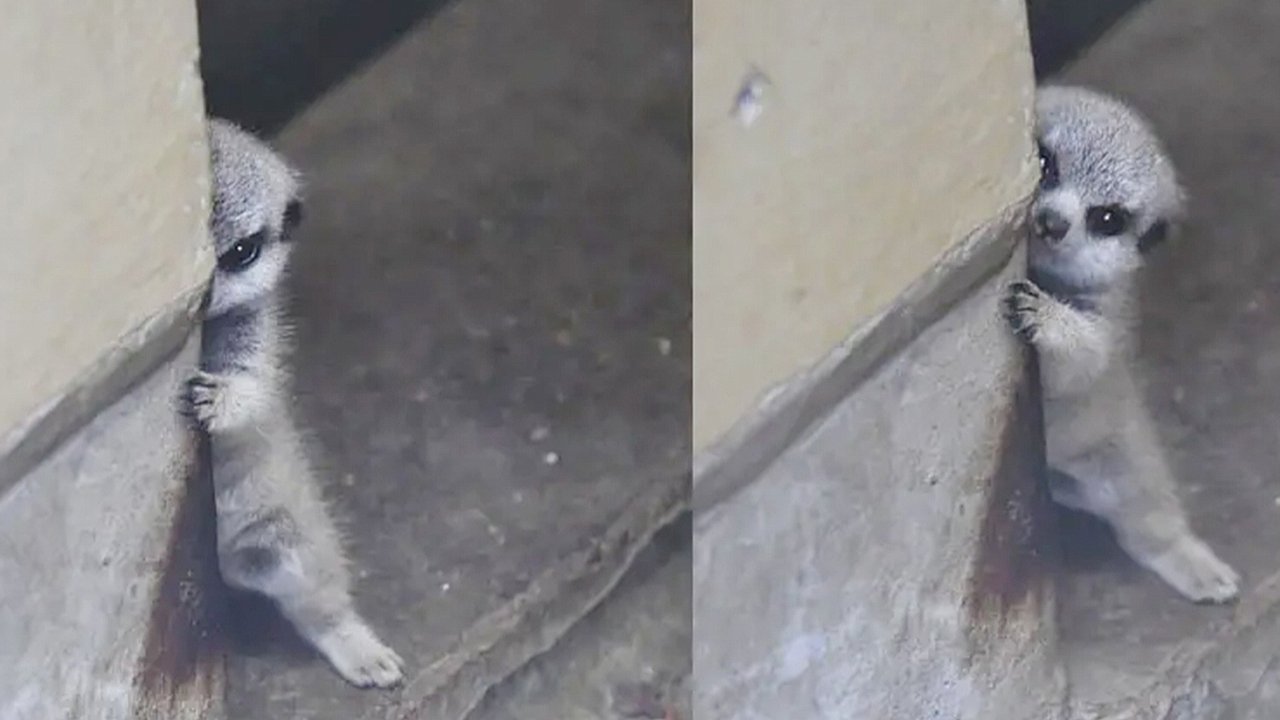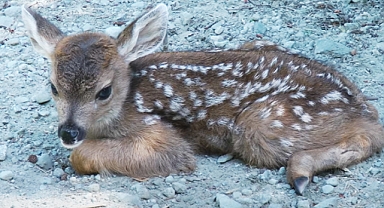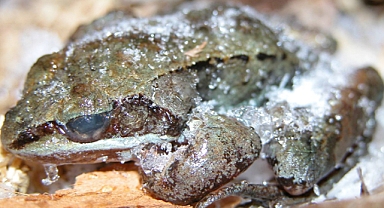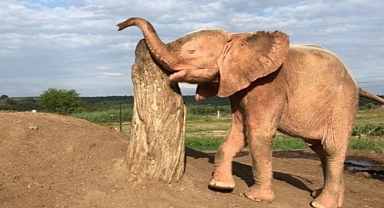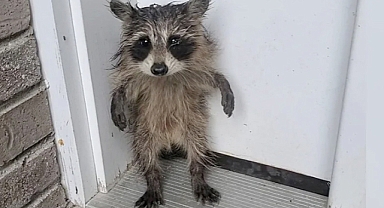A shy baby meerkat Melts Hearts at Inokashira Park Zoo
In the zoo’s meerkat enclosure, a group of newborn pups had recently arrived. While all the babies were undeniably adorable, one in particular stood out—a bashful little meerkat hiding cautiously behind a wall, wary of the camera’s lens.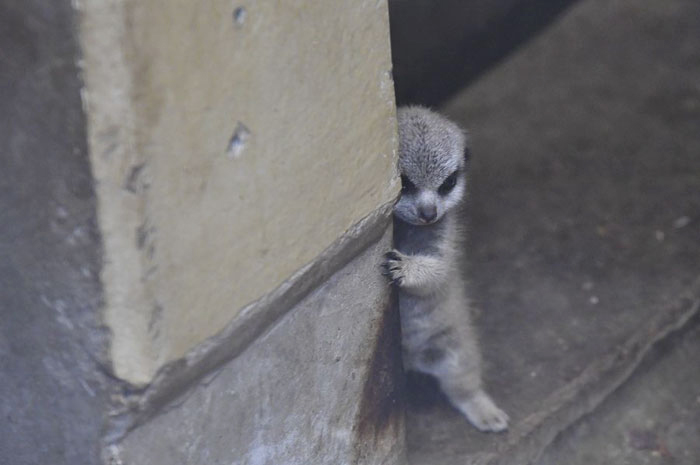 Captivated by the pup’s shyness, the photographer began snapping pictures of the timid creature. At first, the meerkat remained tucked behind the wall, peeking out with wide, curious eyes. But soon enough, it summoned the courage to step into the open, revealing a face so irresistibly cute that the photographer couldn’t stop taking pictures. The heartwarming images, which show the meerkat gradually overcoming its fear, quickly made their rounds on social media, delighting animal lovers worldwide.Life in a Meerkat Clan
Captivated by the pup’s shyness, the photographer began snapping pictures of the timid creature. At first, the meerkat remained tucked behind the wall, peeking out with wide, curious eyes. But soon enough, it summoned the courage to step into the open, revealing a face so irresistibly cute that the photographer couldn’t stop taking pictures. The heartwarming images, which show the meerkat gradually overcoming its fear, quickly made their rounds on social media, delighting animal lovers worldwide.Life in a Meerkat Clan
Meerkats are small omnivorous mammals that belong to the mongoose family. Native to the arid deserts of Botswana, Namibia, Angola, and South Africa, these social animals are known for their communal lifestyle. They live in large underground burrow systems with numerous entry and exit points. These complex tunnel networks help shield them from predators and protect them from extreme desert temperatures. Meerkat society is highly organized, with members living in groups known as "clans," "mobs," or "gangs" that typically consist of 20 to 50 individuals. Each member of the group is assigned a role to ensure the survival of the clan. Some are responsible for digging and maintaining the tunnels, while others venture out in search of food. The roles often rotate, showcasing the group’s cooperative nature.Female meerkats typically care for the young, feeding and safeguarding them within the burrow. Babysitters play a crucial role—protecting the pups from potential danger, including rival meerkat mobs that might attempt to infiltrate the burrow and harm the young. These caretakers are often willing to risk their own lives in defense of the infants.From Desert Dwellers to Zoo Residents
Meerkat society is highly organized, with members living in groups known as "clans," "mobs," or "gangs" that typically consist of 20 to 50 individuals. Each member of the group is assigned a role to ensure the survival of the clan. Some are responsible for digging and maintaining the tunnels, while others venture out in search of food. The roles often rotate, showcasing the group’s cooperative nature.Female meerkats typically care for the young, feeding and safeguarding them within the burrow. Babysitters play a crucial role—protecting the pups from potential danger, including rival meerkat mobs that might attempt to infiltrate the burrow and harm the young. These caretakers are often willing to risk their own lives in defense of the infants.From Desert Dwellers to Zoo Residents
The average lifespan of a meerkat is around 12 to 14 years. Their diet includes a variety of food such as insects, small rodents, fruits, birds, lizards, and even venomous scorpions—thanks to their immunity to certain toxins. Meerkats reach reproductive maturity at about two years old and can breed throughout the year. A female typically gives birth to litters of up to four pups. Around the three-week mark, the pups are allowed to explore outside the safety of the burrow and soak up some sun under the watchful eyes of adults.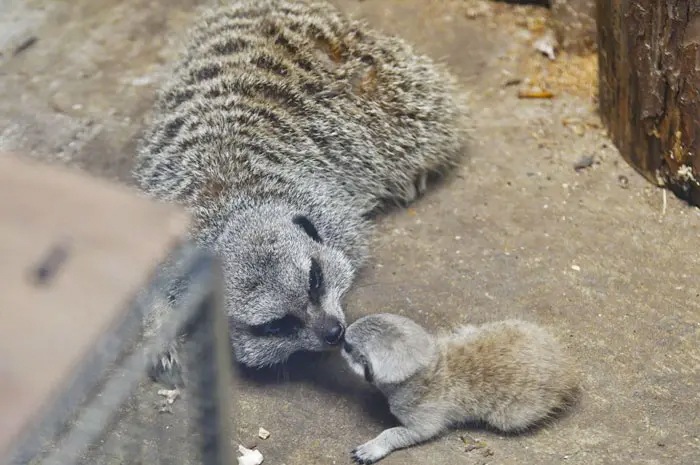 In captivity, such as at Inokashira Park Zoo, meerkats can live even longer than in the wild. Zoo environments offer them a safer habitat free from natural predators and intergroup violence. Additionally, they are provided with consistent meals and medical care, removing the survival pressures they face in the wild.Meet the Star of the Show
In captivity, such as at Inokashira Park Zoo, meerkats can live even longer than in the wild. Zoo environments offer them a safer habitat free from natural predators and intergroup violence. Additionally, they are provided with consistent meals and medical care, removing the survival pressures they face in the wild.Meet the Star of the Show
Visitors to Inokashira Park Zoo may still get a chance to see the once-shy baby meerkat that captured the internet’s heart. Having grown accustomed to the attention, the pup is reportedly far less timid now and often greets guests with playful curiosity. Alongside this charming meerkat family, the zoo houses a variety of other fascinating creatures, including Japanese squirrels, Japanese serows, Asiatic elephants, mandarin ducks, Japanese martens, and more.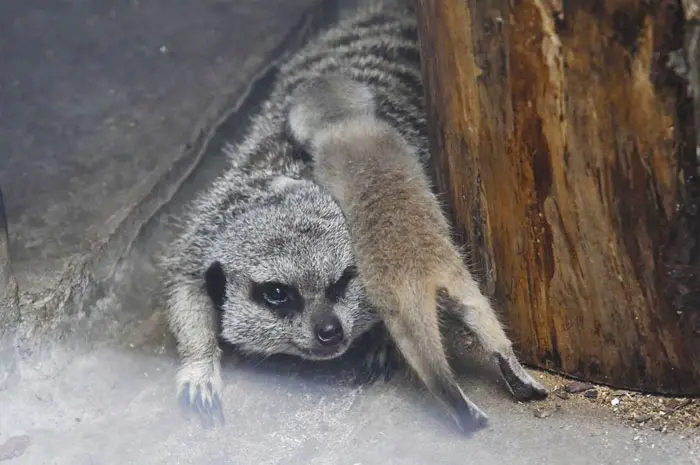 The story of this shy baby meerkat serves as a gentle reminder of the tender, emotional side of wildlife that often goes unnoticed. And thanks to one patient photographer’s eye for quiet moments, the world got to witness an unforgettable tale of cuteness, courage, and connection.
The story of this shy baby meerkat serves as a gentle reminder of the tender, emotional side of wildlife that often goes unnoticed. And thanks to one patient photographer’s eye for quiet moments, the world got to witness an unforgettable tale of cuteness, courage, and connection.
In the zoo’s meerkat enclosure, a group of newborn pups had recently arrived. While all the babies were undeniably adorable, one in particular stood out—a bashful little meerkat hiding cautiously behind a wall, wary of the camera’s lens.
 Captivated by the pup’s shyness, the photographer began snapping pictures of the timid creature. At first, the meerkat remained tucked behind the wall, peeking out with wide, curious eyes. But soon enough, it summoned the courage to step into the open, revealing a face so irresistibly cute that the photographer couldn’t stop taking pictures. The heartwarming images, which show the meerkat gradually overcoming its fear, quickly made their rounds on social media, delighting animal lovers worldwide.Life in a Meerkat Clan
Captivated by the pup’s shyness, the photographer began snapping pictures of the timid creature. At first, the meerkat remained tucked behind the wall, peeking out with wide, curious eyes. But soon enough, it summoned the courage to step into the open, revealing a face so irresistibly cute that the photographer couldn’t stop taking pictures. The heartwarming images, which show the meerkat gradually overcoming its fear, quickly made their rounds on social media, delighting animal lovers worldwide.Life in a Meerkat ClanMeerkats are small omnivorous mammals that belong to the mongoose family. Native to the arid deserts of Botswana, Namibia, Angola, and South Africa, these social animals are known for their communal lifestyle. They live in large underground burrow systems with numerous entry and exit points. These complex tunnel networks help shield them from predators and protect them from extreme desert temperatures.
 Meerkat society is highly organized, with members living in groups known as "clans," "mobs," or "gangs" that typically consist of 20 to 50 individuals. Each member of the group is assigned a role to ensure the survival of the clan. Some are responsible for digging and maintaining the tunnels, while others venture out in search of food. The roles often rotate, showcasing the group’s cooperative nature.Female meerkats typically care for the young, feeding and safeguarding them within the burrow. Babysitters play a crucial role—protecting the pups from potential danger, including rival meerkat mobs that might attempt to infiltrate the burrow and harm the young. These caretakers are often willing to risk their own lives in defense of the infants.From Desert Dwellers to Zoo Residents
Meerkat society is highly organized, with members living in groups known as "clans," "mobs," or "gangs" that typically consist of 20 to 50 individuals. Each member of the group is assigned a role to ensure the survival of the clan. Some are responsible for digging and maintaining the tunnels, while others venture out in search of food. The roles often rotate, showcasing the group’s cooperative nature.Female meerkats typically care for the young, feeding and safeguarding them within the burrow. Babysitters play a crucial role—protecting the pups from potential danger, including rival meerkat mobs that might attempt to infiltrate the burrow and harm the young. These caretakers are often willing to risk their own lives in defense of the infants.From Desert Dwellers to Zoo ResidentsThe average lifespan of a meerkat is around 12 to 14 years. Their diet includes a variety of food such as insects, small rodents, fruits, birds, lizards, and even venomous scorpions—thanks to their immunity to certain toxins. Meerkats reach reproductive maturity at about two years old and can breed throughout the year. A female typically gives birth to litters of up to four pups. Around the three-week mark, the pups are allowed to explore outside the safety of the burrow and soak up some sun under the watchful eyes of adults.
 In captivity, such as at Inokashira Park Zoo, meerkats can live even longer than in the wild. Zoo environments offer them a safer habitat free from natural predators and intergroup violence. Additionally, they are provided with consistent meals and medical care, removing the survival pressures they face in the wild.Meet the Star of the Show
In captivity, such as at Inokashira Park Zoo, meerkats can live even longer than in the wild. Zoo environments offer them a safer habitat free from natural predators and intergroup violence. Additionally, they are provided with consistent meals and medical care, removing the survival pressures they face in the wild.Meet the Star of the ShowVisitors to Inokashira Park Zoo may still get a chance to see the once-shy baby meerkat that captured the internet’s heart. Having grown accustomed to the attention, the pup is reportedly far less timid now and often greets guests with playful curiosity. Alongside this charming meerkat family, the zoo houses a variety of other fascinating creatures, including Japanese squirrels, Japanese serows, Asiatic elephants, mandarin ducks, Japanese martens, and more.
 The story of this shy baby meerkat serves as a gentle reminder of the tender, emotional side of wildlife that often goes unnoticed. And thanks to one patient photographer’s eye for quiet moments, the world got to witness an unforgettable tale of cuteness, courage, and connection.
The story of this shy baby meerkat serves as a gentle reminder of the tender, emotional side of wildlife that often goes unnoticed. And thanks to one patient photographer’s eye for quiet moments, the world got to witness an unforgettable tale of cuteness, courage, and connection.